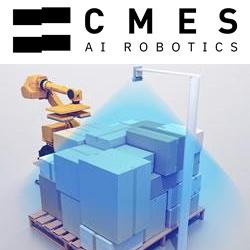The US coast guard is deploying drones to catch increasingly tech-savvy drug traffickers
Another Race to the Moon-This Time by Robots
Researchers developing robotic prosthetics to help restore balance in fall victims
Technology Behind the Intel Drone Light Shows
Elon Musk: Robot software will make Tesla worth as much as Apple
Abundant Robotics raises $10 million to commercialize its apple-picking robot
What does the future of drone technology look like? We have an idea!
Cognitive Automation : Advent of Virtual Workforce
WiBotic Announces $2.5 Million in New Funding for its Wireless Power Solutions for the Robotics Industry
Robotic Construction Platform Creates Large Buildings on Demand
Robotic Process Automation (RPA) - The Future of Outsourcing
Wireless Electric Planters Optimize Crop Yield
The next great CEO could be a robot, Alibaba's Jack Ma says
Key Best Practices for Successful Implementation of Automation
More Farmers Considering Drone Use
Records 811 to 825 of 1196
First | Previous | Next | Last
Featured Product

